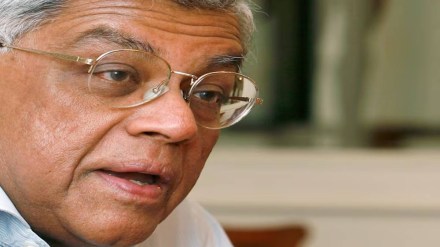At the just concluded summit organized by the Financial Express on the Indian BFSI sector, a link node running across all sessions was reliance on hard facts, data and avoidance of abstract nouns. But then, apparently, it is the season of adjectives, especially when it comes to describing the future of the Indian economy. Veteran financial sector guru and an institution-builder Deepak Parekh chose to stay ‘optimistic’ about the future of the Indian economy. After explaining why in his special address at the summit, he concluded: “I think some of our best days are yet ahead of us.”
Here is why the positive outlook: “We have crossed the half way mark of calendar year 2025 and my reading of the second half of the calendar year is that we should see improved urban demand though rural consumption in the second half will continue to grow at a slower pace,” he said. The reason: “we have lower interest rates, there is an upcoming festival season and there is also an income tax relief of Rs 12 lakh per annum and all of it should be favourable for the consumption growth engine.” There is more: “This June quarter results too reveal a nuanced picture of resilience as well as divergence. The corporate results of 280 companies reveal that profitability has been strong with the growth of 18 per cent for the quarter ended June 25 but the revenue growth remains tepid at 5 per cent.”
Reasons behind Parekh’s optimistic view
Here, explaining the reasons and yet the optimism, he said: “What has transpired is that for many profitability has been driven by cost optimization and extraordinary income.” Cost optimization, he cautioned, “may plateau at some time so focus going forward has to be on revenue growth.” But then, “there lies the challenge of boosting private capex because capacity utilization has not moved up from 75 per cent level for a while now.”
Despite these challenges, the reason for the optimism: “The recent CMIE (Centre For Monitoring Indian Economy) data shows that in the quarter ended June 25, manufacturing sector accounted for 54 per cent of new project announcements amounting to Rs 2.3 trillion (around $ 26 billion) and mainly in sectors like metals, chemicals and machinery.” CMIE is a leading business information company and an independent think tank.
This, Parekh felt, “may mark a turning point especially with the government’s concerted efforts at positioning India as a global manufacturing hub and integrating into the global supply chain.” He added, “no doubt, the state governments too will need to do some heavy lifting if we want to shift the needle for manufacturing from 15 per cent of the Gross Domestic Product (GDP) to the desired level of 25 per cent of GDP.
Deepak Parekh on India’s growth agenda
On India’s growth aspirations, Parekh said, “globally, India still remains the fastest growing (large) economy and is currently a $ 4 trillion economy with an aspiration to get to $ 5 trillion in a short span of time. But then, giving a dimension of scale, said, “a single company in the US, Nvidia’s market capitalization is $ 4 trillion because AI chips are powering the fourth industrial revolution.”
However, at the end, it was really about the journey ahead and the end goal of a seat on the high table of rich nations. Or, as Parekh worded it: “We in India know what we are aspiring for – a Viksit Bharat by 2047.”
